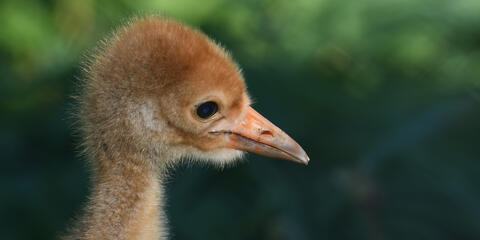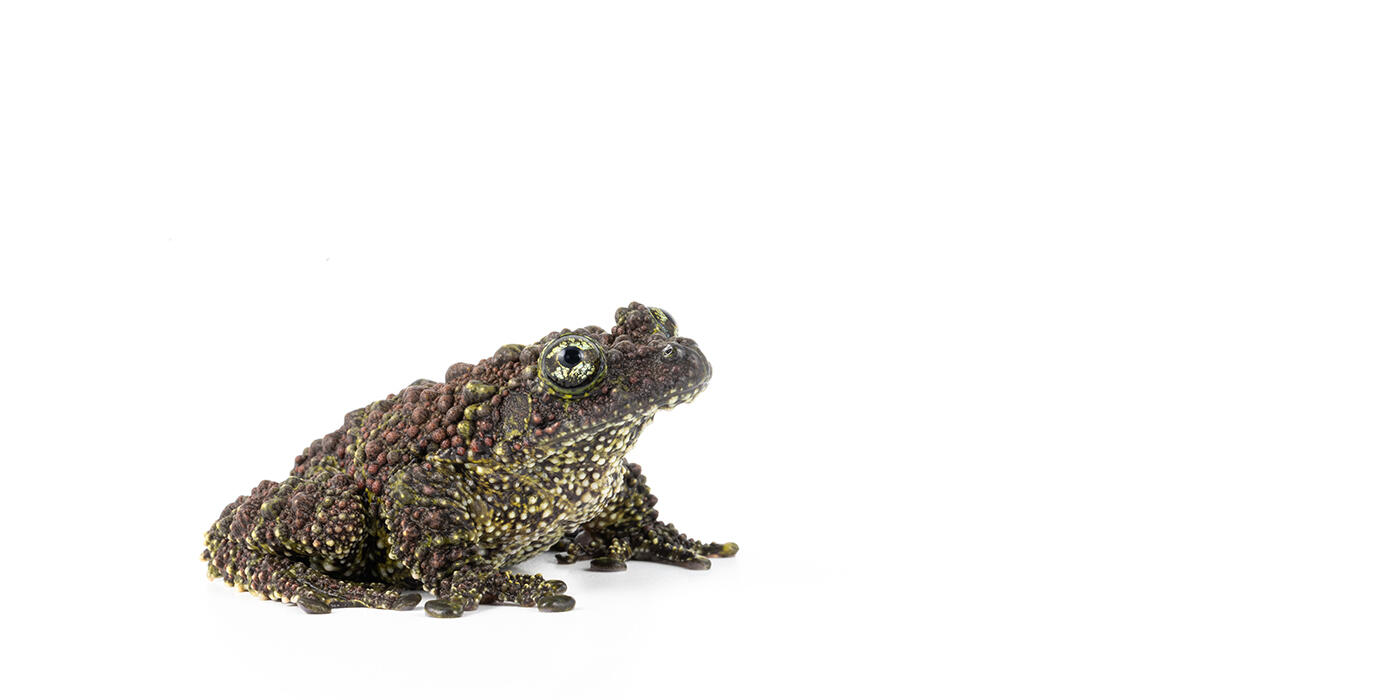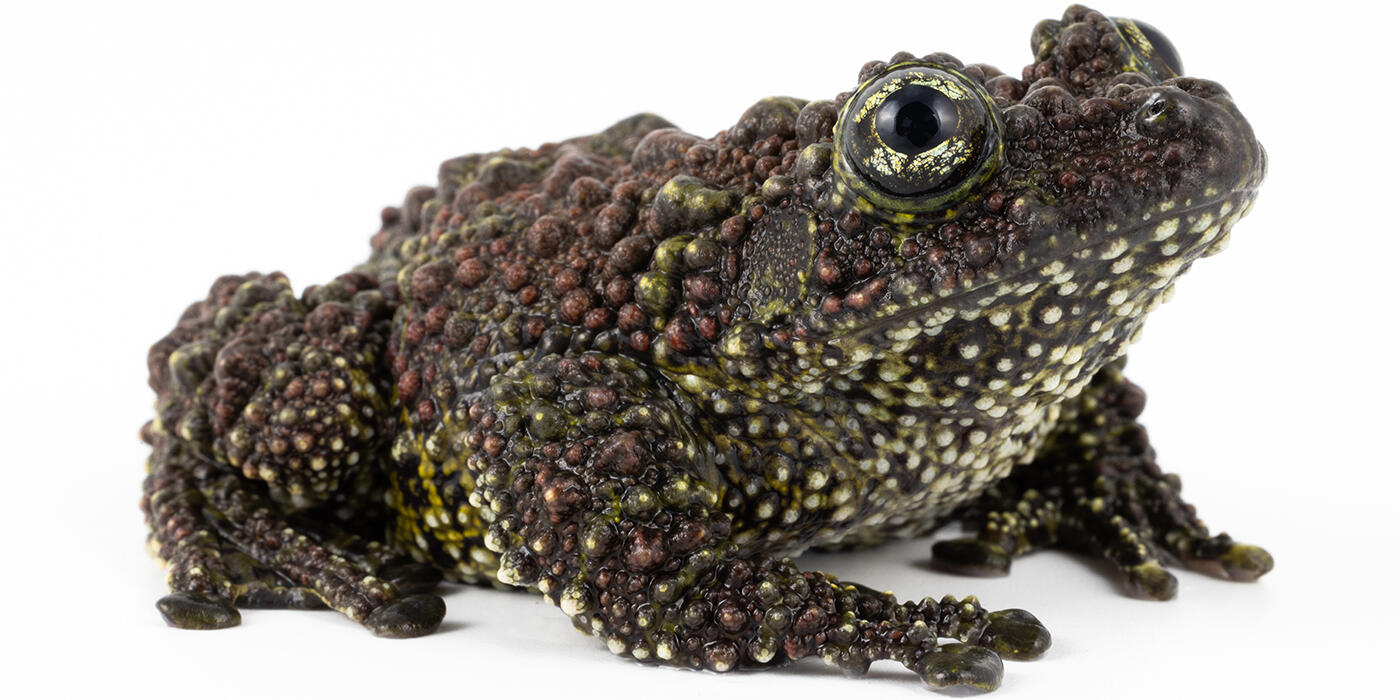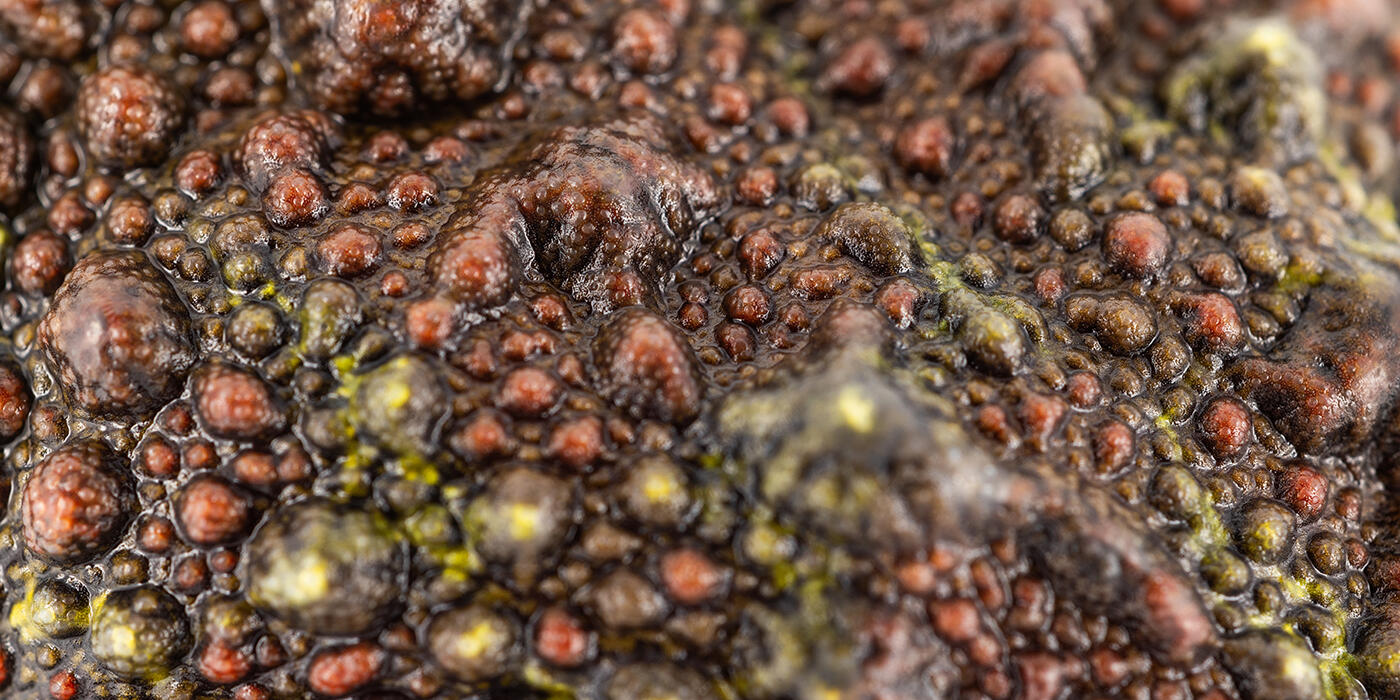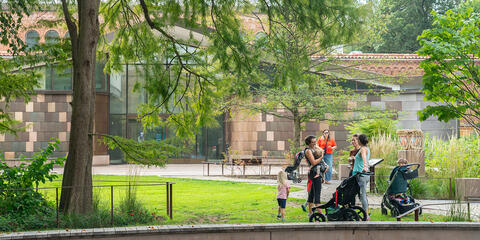Physical Description
Vietnamese mossy frogs greatly resemble a clump of moss thanks to their green color, black spots, and visible tubercules and spines. They hide in basins of water found in crevices with only their eyes protruding to keep a watchful eye on their surroundings. As a result, they're almost impossible to spot when sitting still. These tree frogs have adhesive toe pads and can jump. Males have a pronounced breeding callus on the base of their inside finger.
Size
The Vietnamese mossy frog grows up to 3.5 inches (7 to 8 centimeters), with males tending to be smaller and thinner than females.
Native Habitat
As its name suggests, the Vietnamese mossy frog lives in Vietnam; specifically in northern Vietnam, a region defined by limestone cliffs and evergreen rainforests.
Vietnamese mossy frogs are found in flooded caves and in the banks of rocky mountain streams at elevations of 2,300 to 3,280 feet (700 to 1,000 meters). This semi-aquatic species spends much of the time hiding in the water under rocks and floating plants. They will also attach themselves to rock crevices, appearing to be moss.
Lifespan
Unknown, probably ten years.
Communication
Vietnamese mossy frogs can throw their voices up to 10 to 13 feet (3 to 4 meters), making it extremely difficult to find them in the wild.
Food/Eating Habits
Mossy frogs hunt large insects such as crickets and cockroaches. At the Smithsonian's National Zoo, they eat a diet of crickets, cockroaches and earthworms.
Sleep Habits
Vietnamese mossy frogs are active at night.
Reproduction and Development
Vietnamese mossy frogs breed in rock cavities where water has flooded the floor. A clutch of eight to ten eggs is deposited above the water to protect them from aquatic predators. The eggs hatch in seven to 14 days and the newly hatched tadpoles drop into the water directly below them. Metamorphosis from tadpole to frog takes about three months. This species has been bred in human care.
Conservation Efforts
The Vietnamese government protects Vietnamese mossy frogs, but their habitat is threatened by development and clear-cutting and they are in demand in the international pet trade.
Help this Species
- Be a smart consumer. Choose products made with sustainable ingredients, such as Smithsonian certified Bird Friendly coffees, which support farmers striving to limit their impact on wildlife and habitat.
- Choose your pets wisely, and do your research before bringing an animal home. Exotic animals don’t always make great pets. Many require special care and live for a long time. Tropical reptiles and small mammals are often traded internationally and may be victims of the illegal pet trade. Never release animals that have been kept as pets into the wild.
- Share the story of this animal with others. Simply raising awareness about this species can contribute to its overall protection.
- Less is more. Cut down on the demand for resources by consuming less. Buy only what you need, and look for pre-owned or repurposed items before purchasing something brand new.
Animal News
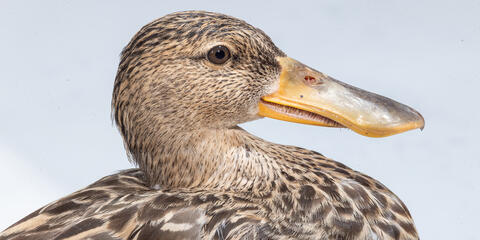
Historic Hatching: Northern Shoveler Ducklings
